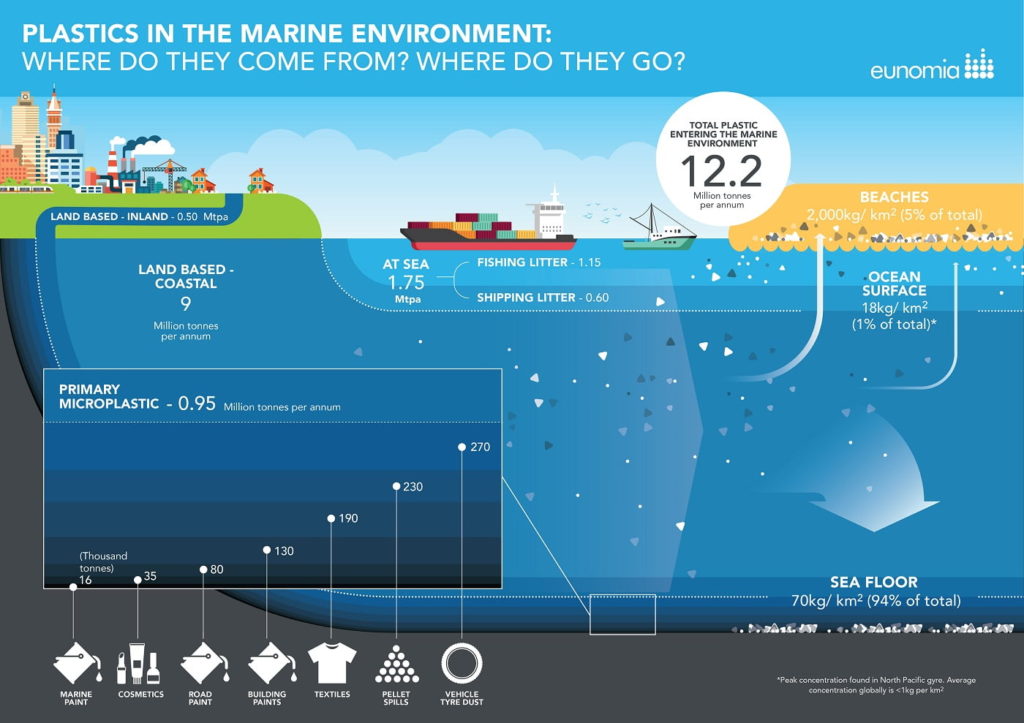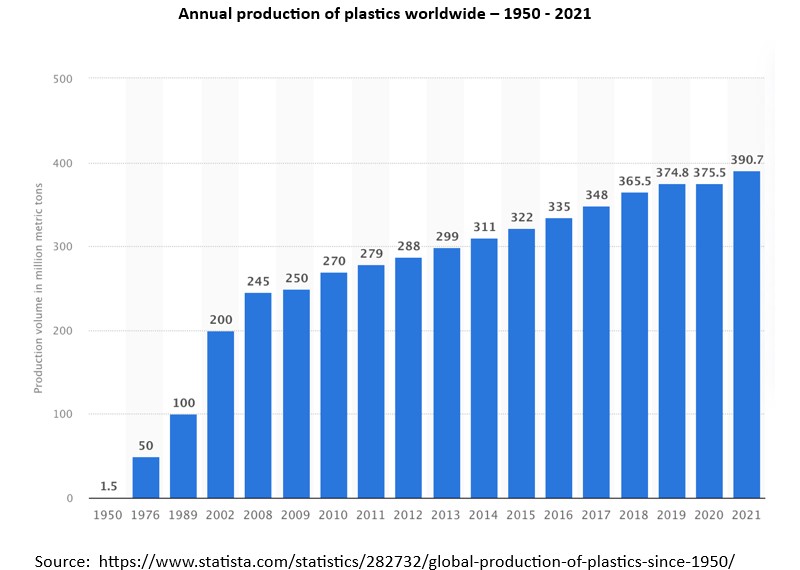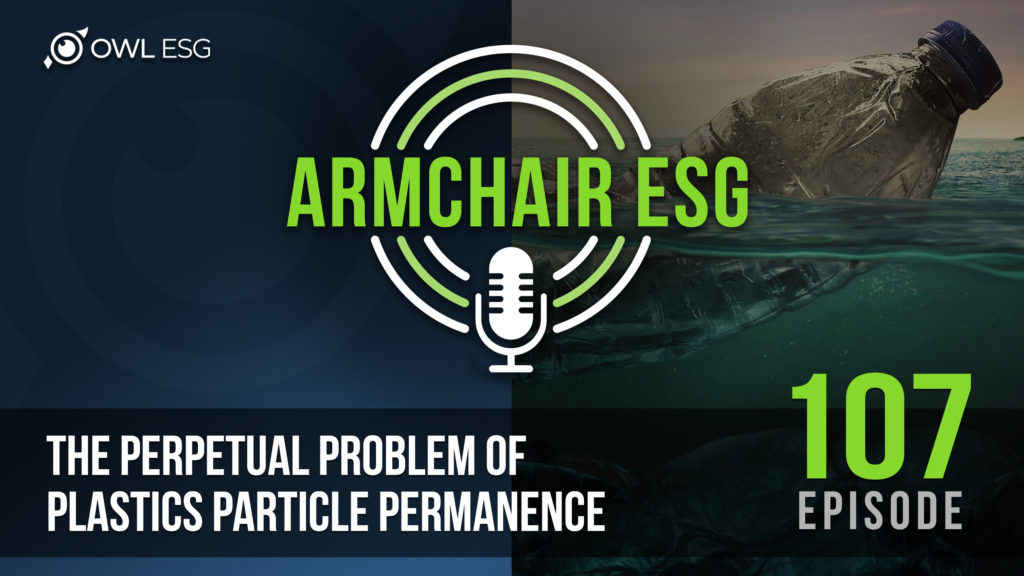Among the environmental aspects of ESG consideration, corporations’ plans to reduce greenhouse gas (GHG) emissions tend to get the most attention from investors. However, plastic waste disposal and recycling is arguably a more significant, and more immediate, concern.
“Plastics“ specifically refers to a wide range of materials, generally derived from crude oil, which share certain common properties. More recognizable names like polyethylene terephthalate (PET), vinyl chloride, resin, epoxy, Styrofoam, and polycarbonate (which includes Bisphenol A) are among the many materials that comprise the category “plastic.” While they each have different properties and related uses, they are all lightweight, strong, resilient, and good electricity insulators. They are also incredibly durable.
These shared characteristics have made plastic one of the most revolutionary discoveries in human history. Plastic packaging and coatings have substantially improved food preservation and shelf life, all but eliminated botulismpoisoning, and made it possible to transport perishable items further using less energy. Medical products made from plastic are inexpensive and easy to make and single-use devices have dramatically reduced the spread of infection.
Plastic-based products have fundamentally changed many industries, from automobile and plane production to toy manufacturing and home building. In fact, few industries can claim to be unaffected by the development of plastic products, which save time, money, energy, and other resources, while increasing safety and reliability.
Unfortunately, the same properties that have made plastic such a boon for industry result in a product that is a veritable environmental nightmare. Plastics break down into micro and nano particles, called microplastics. These microplastics are determined travelers, turning up almost everywhere around the world.

Plastic waste and microplastics have been found from the peaks of the Rocky Mountains to the top of Mount Everest, and from the Blue Hole in Belize to the bottom of the Mariana Trench. Microplastic particles have been found in human blood, human lung tissue, and even in baby poop. In fact, some estimates say that humans ingest as much as a credit card worth of plastic, in the form of environmental microplastics, every week.
Plastics are particularly nasty for the human endocrine system. Structurally, plastic is highly similar to certain types of the hormone estrogen, and some of its byproducts even more so. While the toll this takes on the human body is still being measured, and seems to vary by person and by the amount of plastic in the body, the evidence is overwhelming that the net health effects are negative, potentially significantly.
Acknowledging both the positive and negative impacts of plastic on humanity, companies would best serve their own interests and humanity’s in general by seeking healthier alternatives that provide the same benefits. Instead, the amount of plastic being produced and used in single-use and longer-term products alike, is increasing significantly year-over-year.
Regulators, relying on industry lobbyists for guidance, have proven to be entirely unreliable in driving accurate information, useful guidance, or meaningful restrictions surrounding the production and disposal of plastics. While there is some movement toward global collaboration on reducing plastic, meaningful progress likely remains a longer-term prospect, at best.

Lacking a suitable alternative product, disposal is the biggest challenge when dealing with plastics on a large scale. Single-use plastics, comprising things like drinking straws, grocery bags, food wrappers, bottles, and those little three-legged table-looking things that hold up our pizza, are a big part of the quickly growing plastic waste filling up landfills and waterways, but consumers are far from the only source. Marine and fishing industry byproducts, especially discarded fishing nets, contribute a massive amount of plastic waste in the environment.
Once these products have entered the environment, dumped into landfills, discarded by boats, or “disposed of” by governments that dump them in the ocean, the durability of plastic creates substantial challenges. Plastics persist in the environment for centuries and longer, both as microplastics and in larger forms. This suggests that microplastics will continue to find their way into every corner of the planet for the foreseeable future.
It also suggests that plastic products, like fishing nets and single-use items, will continue to leach microplastics for centuries to come. While the Great Pacific Plastic Patch, a swirling collection of plastic in the Pacific Ocean that is larger than U.S. state of Texas, is probably the most famous, every ocean on our planet has its own great plastic patch. Plastic degrades waterways, marshlands, oceans, mountains, cities, suburbs…
Innovation and technology does offer some hope, as biodegradable alternatives to plastic are beginning to show up in consumer products. And some companies are signaling that this is a problem to be taken seriously, and have announced measures to address things like single-use plastics.
But plastic remains notoriously difficult and expensive to recycle, and its incredible effectiveness suggests that optimism for reasonable alternatives is likely unrealistic. For now, however, there are no practical options for people to avoid ingesting microplastics into their systems. This does not mean all hope is lost. For the market to incentivize a shift in the way plastic is produced and disposed of, both consumers and investors will have to vote with their dollars. Certainly, mass rejection of single-use plastics, like water bottles, would move the needle in the right direction. Facing loss of investment capital and customer revenue, companies have an excellent track record of pivoting strategy and improving their products for themselves, their consumers, and the broader world.
Contact us to learn about our in-depth data, extensive coverage and custom solutions, and why so many organizations choose OWL to meet their needs for ESG data and analyses.
The Armchair ESG with Nate and Yates delve deeper into the subject of ESG and plastics. Click on the link to listen/watch our podcast.





